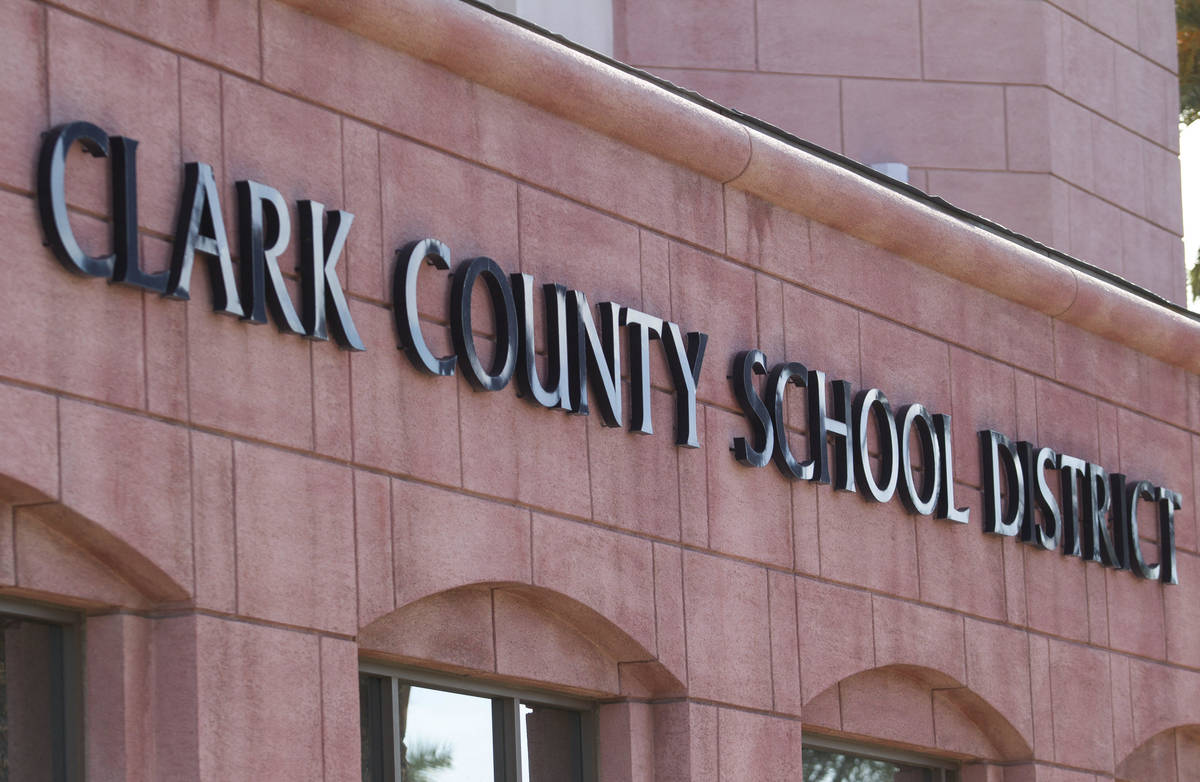CCSD unable to contact 67K students in 1st week after shutdown
More than 67,000 Clark County School District students — or almost 21 percent of the total — were unreachable during the first week of school closures despite educators’ attempts to get in touch with their families, according to data provided Wednesday by the district.
School district representatives said via email that 257,486 students — or about 79 percent of the district’s 325,081 — were contacted by their teachers from March 23 to 29, the first week that distance learning rolled out at CCSD following Gov. Steve Sisolak’s order to close all Nevada schools.
But the remaining 67,595 students could not be reached by teachers or administrators, raising concerns that they are not tapping into distance learning via the internet or hard-copy learning packets the district has been distributing.
All told, teachers have made a total of 678,324 contacts in accordance with a Nevada Department of Education directive that educators contact their students once per week, according to the district. And approximately 20,000 hard-copy packets of learning materials have been distributed, though there is no way of knowing whether they reached the students who have not been contacted.
Despite repeated requests over two days from the Review-Journal for data on how many individual students had been contacted after the shutdown, the district did not provide the figures until the newspaper published an article Tuesday evening saying it was apparently out of compliance with the state directive, which requires tracking of student contacts.
After providing the information on the first week of distance learning Wednesday morning, the district did not say when the numbers for the second week would be available. The district did provide a statement on the first week of distance learning numbers, encouraging students and parents to check their emails and phone messages.
Superintendent raised issue
“The limited investment in funding for distance education has amplified the inequities for our students across all of our schools. As with other school districts across America, we too are in uncharted waters, working to ensure our students and staff are able to keep learning and teaching. We are doing additional work to interpret NDE guidelines so our contacts with students may change and look different as we move forward,” the statement said.
The issue of students being unable to connect to online learning opportunities was raised by CCSD Superintendent Jesus Jara immediately after Sisolak’s March 15 order closing the schools, when he initially declined to submit a distance learning plan by a state deadline. He estimated then that about 120,000 CCSD students would struggle to access online learning due to inequitable access to technology.
A report by the nonprofit Guinn Center, a Nevada-based bipartisan research and policy analysis center, released Wednesday examined the state’s “digital divide” in education, noting that there are two separate obstacles that can prevent students from accessing online learning: one related to computer access and another to connectivity.
“If this digital divide is not addressed, there is a real possibility that student achievement will decrease for students not able to access their lessons and/or teachers virtually, leading to a possible widening of achievement gaps,” the report states.
The Guinn Center analysis of census data puts the number of households in Clark County with school-aged children who don’t have a computer at 32,351. Assuming that each house has two children, the report continues, there could be just over 64,000 CCSD students without computer access.
CCSD has announced it will reallocate money for 46,000 new Chromebooks and seek donations to purchase an additional 74,000. The district did not provide a number of how many of its existing Chromebooks have been loaned to students since distance learning began.
School districts are also turning to the private sector to address the connectivity issue, with some internet service providers offering free internet for low-income families during school closures.
But the services may not be reaching some families who are most in need. One CCSD parent who asked not to be identified reported that the free and reduced-price internet plans were not available to his family in a weekly rental unit, where they are not allowed to install outside routers. Instead, they are charged a $20 weekly fee per device for internet access, he said.
The free internet offers also come with conditions, such as having no outstanding debt with the provider, in some instances.
Apart from basic device access and connectivity, the Guinn Center report also noted that while the number of households without access to at least a smartphone is much lower than the number of households without any kind of computing device, parents may need to use those phones themselves.
Internet access and data plans must also be strong enough to support video calling, the report states, as direct teacher interaction is only available virtually.
“Still, the most immediate relief for some, but not all, students would be to ensure that all virtual lessons can be completed on a smartphone,” the report states. “As this may only be a Band-Aid to address the digital divide, state and local leaders must continue to explore more permanent solutions.”
Contact Aleksandra Appleton at 702-383-0218 or aappleton@reviewjournal.com. Follow @aleksappleton on Twitter.






































